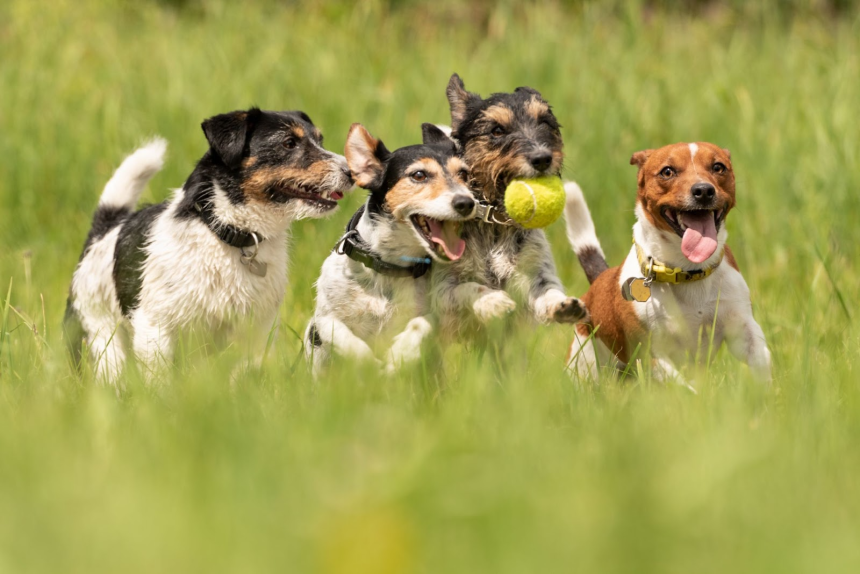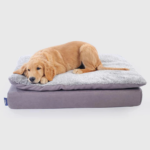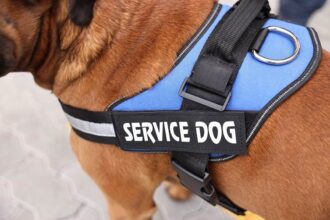In the world of pet ownership, one of the key responsibilities is ensuring the safety and security of our canine companions. Dog containment systems play a crucial role in this aspect, offering various solutions to keep pets within safe boundaries. These barriers range from traditional physical barriers to more advanced technological solutions, catering to diverse needs and environments.
This article aims to provide a comprehensive overview of the different types of containment systems available, helping pet owners make informed decisions for the welfare of their pets.
Understanding Containment Systems
Canine perimeter controls are designed to restrict a dog’s movement to a specific area, ensuring their safety while giving them freedom to move. The primary purpose of this solution is to prevent pets from wandering off into potentially dangerous situations, like traffic or unfamiliar territories. Choosing the right system depends on several factors, including the dog’s size, breed, temperament, and the owner’s living environment. A well-chosen dog containment system not only secures the pet but also provides peace of mind to the owner.
Traditional Fencing Systems
Traditional fencing, such as wooden, chain link, and metal fences, is a common method for containing pets. Wooden fences offer privacy and a natural look, while chain link fences are durable and provide visibility.
Metal fences can be both decorative and robust. Each type has its advantages, such as durability or aesthetic appeal, and limitations, like cost or installation complexity. Maintenance, local zoning laws, and the dog’s ability to jump or dig under fences are important considerations.
Electronic Containment Systems
Electronic dog systems, including invisible or wireless fences, are modern solutions that use a collar and a boundary set by the owner. These systems emit a warning signal or mild corrective stimulus when the canine approaches the set boundary. They are less intrusive in terms of landscape and can be more flexible in terms of setup. However, they require training for the fido to understand the boundaries, and there are concerns about the safety and ethical aspects of the corrective stimulus.
GPS-Based Containment Systems
GPS-based dog barrier solutions represent a leap in technology, offering more flexibility and range than traditional electronic methods. These methods use GPS technology to set boundaries and track the pet’s location. They are particularly useful in large, open areas where physical fencing is impractical. However, they can be more expensive and depend on the reliability of GPS signals, which can be a limitation in certain areas.
Portable and Indoor Containment Solutions
For temporary or indoor solutions, portable containment options like playpens and indoor gates are ideal. These are particularly suitable for puppies, small dogs, or in situations where a permanent solution is not feasible. Playpens and gates are convenient, easy to set up, and can be moved as needed. They provide a safe and confined space for canines without the need for installation or significant space.
Combining Containment Systems for Optimal Safety
Often, the most effective approach to dog containment involves combining different solutions. For example, a physical fence can be supplemented with an electronic system to prevent digging or jumping. This combination approach can enhance safety, especially in challenging environments or with pets that have a high propensity to escape. It’s important to consider the dog’s individual needs and the specific characteristics of the environment when choosing a combination of solutions.
Integrating Restriction Methods with Home and Landscape Design
Integrating a dog containment system with your home and landscape design is not only about functionality but also about maintaining the aesthetic appeal of your property. Here are some tips and examples to help you achieve a balance between a safe space for your dog and a visually pleasing environment.
Harmonizing with Landscape Themes:
- Choose protection structures that complement your home’s architectural style and landscape theme. For instance, a rustic wooden fence can blend seamlessly with a cottage-style garden, while a sleek, invisible fence might be more suitable for a modern, minimalist yard.
- Consider the color scheme of your home and garden when selecting fencing materials. Matching or complementary colors can create a cohesive look.
Creative Fencing Solutions:
- Decorative fencing: Opt for fences with creative designs, such as lattice patterns or ornamental ironwork, which can serve as a visual feature while containing your pet.
- Living fences: Plant hedges or dense shrubbery as a natural barrier. This not only adds greenery to your garden but also provides a habitat for local wildlife.
Strategic Placement of Electronic Systems:
- For electronic or GPS-based systems, strategically place the control units and boundary markers so they are discreet yet functional. Conceal them within garden features or under landscaping elements to maintain the aesthetic of your outdoor space.
Multi-functional Landscape Features:
- Incorporate landscape features that serve dual purposes. For example, a raised flower bed or a decorative boulder can act as a natural barrier for dogs while enhancing the garden’s appearance.
- Design pathways and open spaces within the containment area to encourage your pet to move around and explore, adding dynamic elements to your landscape.
Blending Indoor and Outdoor Spaces:
- For homes with patio or deck areas, consider integrating pet doors and portable indoor-outdoor containment systems. These allow your dog to move freely between the house and the garden while keeping them safe.
- Use stylish indoor gates or barriers that match your interior decor, ensuring they are functional for your pet but also blend with your home’s design.
Examples of Aesthetic Containment Solutions:
- A beautifully crafted wrought iron fence surrounds a Victorian-style home, providing security for pets while enhancing the property’s historic charm.
- A modern home uses invisible fence controls, where the boundary is marked by subtle landscaping changes, like a shift from lawn to decorative gravel.
- A country house with a wooden rail fence, integrating seamlessly with the rural setting and providing a safe enclosure for dogs.
Integrating canine perimeter controls with your home and landscape design requires a thoughtful approach that considers both functionality and aesthetics. By choosing the right materials, styles, and strategic placements, you can create a safe and attractive space for your pet that also enhances the beauty of your home and garden.
Conclusion
In conclusion, there are various types of containment systems available, each with its own set of advantages and considerations. Whether it’s a traditional fence, an electronic system, a GPS-based solution, or a portable indoor option, the key is to choose a method that best suits the needs of both the pet and the owner. By carefully considering their specific requirements and consulting with professionals if necessary, pet owners can ensure the safety and well-being of their beloved dogs.














